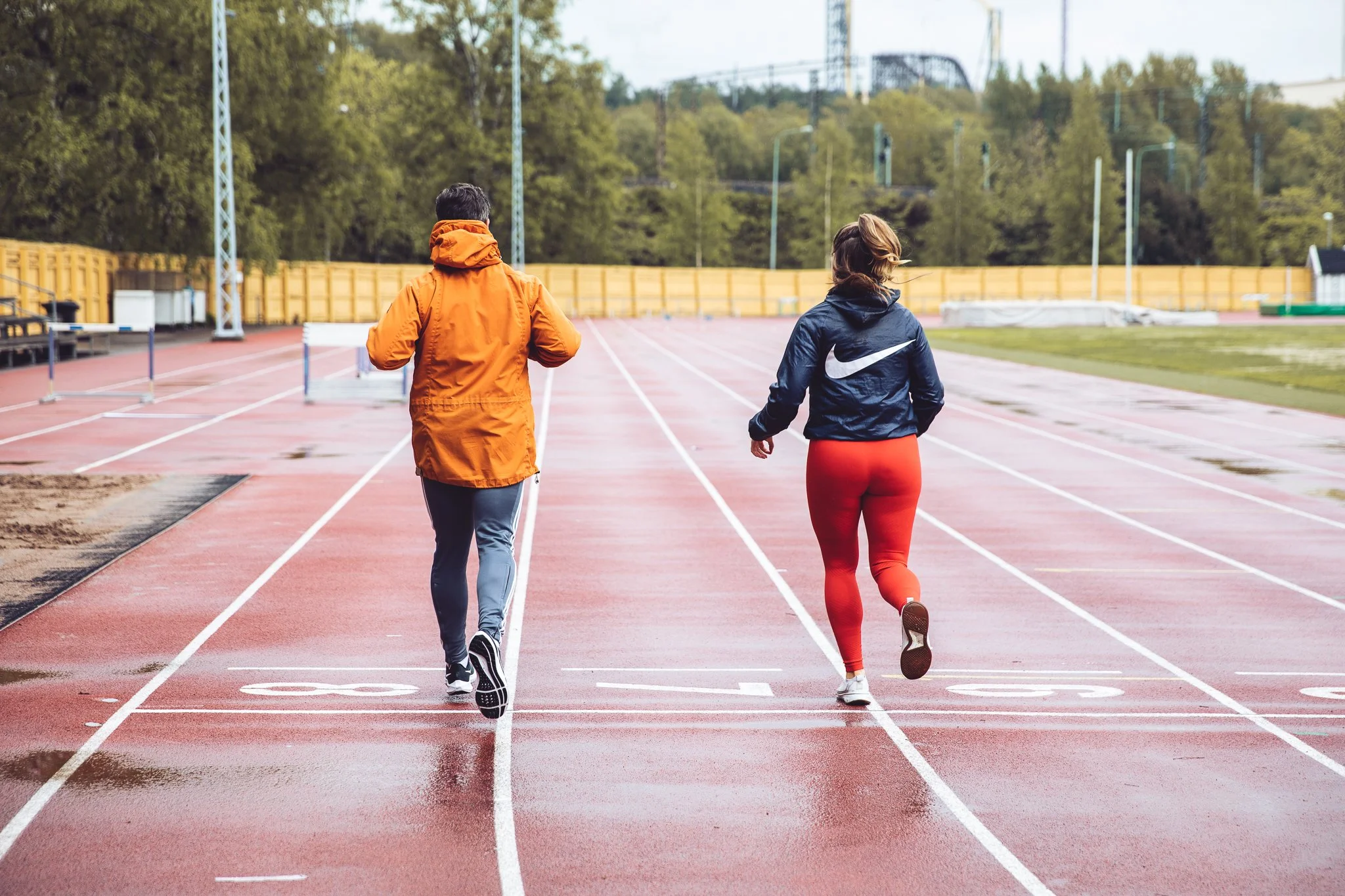What factors influence burnout?
Read time X mins
Have you ever been burned out? Do you know someone who has?
- I’ve been very close to and know many people who’ve had burnout.
As a coach, I see it as my responsibility to understand better the different factors of burnout, especially with people in high-stress environments. I can take the person’s environment better into account when supporting them towards their goals and creating a training plan. The training should consider the client’s lifestyle as well as possible. Another reason to understand burnout better is how common it is nowadays. You can’t just ignore it.
We start by looking at what burnout actually is, what’s the most recent model of it, what kind of factors play a part, and what exercise has to do with it. We focus specifically on the viewpoint of sports and the general population because I see many similarities among them. Let’s go!
What is burnout?
American Psychological Association defines burnout as “physical, emotional, or mental exhaustion accompanied by decreased motivation, lowered performance, and negative attitudes toward oneself and others (1).”
Exhaustion of physical, emotional, and mental resources often results from increased stress in sports or work. Same way as stress, the demands of the environment are greater than the ability to cope with them.
A report by Eurofound in 2018 showed that in the German working population, 10% of men and 11% of women experienced symptoms of burnout. In the Netherlands, the percentage of employees experiencing burnout had increased from 11,3% in 2007 to 14,6% in 2016. (2)
I suspect that the numbers have increased ever since. The global pandemic sure hasn’t helped. The difference between work and leisure time is more blended for a lot of people.
Models of burnout
There are multiple different models of burnout. An integrated model by Gustafsson et al., 2010 is the most recent and most multifaceted one thus we will focus on that one. It includes major antecedents (things that happen before the actual burnout), early signs, consequences, and factors related to personality, coping, and the environment. (3)
There are numerous other models but this one compiles all the information from burnout research. The point is to help understand and prevent burnout in sports. You can see the different aspects in Figure 1 below. In my opinion, it can be applied outside sports as well.
Figure 1. A schematic of athlete burnout including major antecedents, early signs, factors, and consequences. Integrated model by Gustafsson et al (3).
Factors influencing burnout
As we can see from the figure, burnout is a very complicated phenomenon. It can be a very different experience for two different people and this is why it is extremely hard to give guidance to an individual only based on scientific literature.
Some of the factors are 1. entrapment, 2. antecedents, 3. personality, coping, and environment which have their own more specific aspects. We’ll go through the most important aspects of these factors.
Entrapment as a factor
Entrapment explains why athletes stay in their sport and push themselves into burnout. Basically it is when someone feels trapped doing something. Some of the aspects of entrapment are high investments, low alternative attractiveness, performance-based self-esteem, social constraints, and an inflexible organization. (3)
This reminded me of “a gilded cage”. A gilded cage is a figure of speech meaning a place where someone lives in luxury but in reality, they have very little freedom.
Chronic stress as an antecedent
Chronis stress is mentioned to be the most important precursor to burnout. Basically, any factor that is related to stress can be related to burnout as well. Physical or mental stress. (4) This is why finding the balance between stress and recovery should be at the center of every training program.
Perfectionism as a personality factor
A large body of evidence has shown that personality factors like perfectionism are associated with burnout. Perfectionism has different dimensions:
1. Perfectionistic strivings reflect the person’s standards and self-oriented striving for perfection and
2. Perfectionistic concerns reflect the concerns about making mistakes and fears of being evaluated negatively and rejected by others.
An interesting part is that a meta-analysis found strivings to be associated with lower levels of burnout and concerns to be associated with higher levels of burnout (5).
Social & organizational aspects
Studies have shown that negative social interactions, controlling behavior from coaches, and lack of support are negatively associated with burnout (3). In my opinion, this information can be transferred to the corporate world as well. How would e.g. poor working culture, controlling management, and lack of support in the workplace affect your perception of burnout?
Burnout & exercise
A meta-analysis explored the topic as well. To my surprise, it showed no benefit in treating burnout with exercise. There is a lack of high-quality studies so in reality, there might be more to the truth. The researchers only included four randomized controlled trials in the meta-analysis. (6)
One of the RCTs was done on 49 inactive people who were 19-68 years old. They completed a four-week exercise program of either aerobic, resistance, or no exercise. Weekly exercise sessions were only 3 x 30 mins, so the benefits were fairly easy to come by. After the study period, the participants had greater positive well-being and personal accomplishment, and less perceived stress and emotional exhaustion. (7)
A large longitudinal study with over 6700 participants (20-88 years old) completed a fitness test and self-report measures of habitual physical activity, depressive symptoms, and emotional well-being. The authors found that increases in cardiorespiratory fitness and habitual physical activity are associated with lower depression symptoms and greater emotional well-being. (8)
Based on these articles, even though the meta-analysis showed no benefit, I recommend using exercise as a burnout treatment and prevention. As always, I encourage finding the right dosage for you so your stress and recovery stay in balance.
Practising mindfulness, acceptance, and cognitive behavioural therapy
In one of the earlier blog posts about stress (link here), we talked about increasing resilience. Mindfulness, acceptance, and cognitive behavioural therapy are shown to help with burnout as well. In health care providers, mindfulness-based interventions and acceptance commitment therapy showed positive effects in helping with burnout (9, 10).
Summary
Burnout is very multifaceted with different factors playing a part. People can experience it very differently. There is evidence showing that exercise would help treat burnout, but also some that show no benefit. Some interventions that have shown to be effective are mindfulness, acceptance, and cognitive behavioural therapy.
If any of this resonates with you and you are experiencing burnout symptoms. I encourage you to talk to someone, a friend, a family member, a supervisor at work, or a healthcare professional. Find solutions that work for you since we now know that burnout can be very different for everyone. I also want to mention that preventing burnout is a cheaper solution than recovering from one.
References
1. APA Dictionary of Psychology. https://dictionary.apa.org/.
2. Burnout in the workplace: A review of data and policy responses in. Eurofound https://www.eurofound.europa.eu/publications/report/2018/burnout-in-the-workplace-a-review-of-data-and-policy-responses-in-the-eu.
3. Gustafsson, H., Kenttä, G. & Hassmén, P. Athlete burnout: an integrated model and future research directions. International Review of Sport and Exercise Psychology 4, 3–24 (2011).
4. Raedeke, T. D. & Smith, A. L. Development and Preliminary Validation of an Athlete Burnout Measure. Journal of Sport and Exercise Psychology 23, 281–306 (2001).
5. Curran, T. Multidimensional Perfectionism and Burnout: A Meta-Analysis. https://osf.io/wzber (2018) doi:10.31234/osf.io/wzber.
6. Ochentel, O., Humphrey, C. & Pfeifer, K. Efficacy of Exercise Therapy in Persons with Burnout. A Systematic Review and Meta-Analysis. J Sports Sci Med 17, 475–484 (2018).
7. Bretland, R. J. & Thorsteinsson, E. B. Reducing workplace burnout: the relative benefits of cardiovascular and resistance exercise. PeerJ 3, e891 (2015).
8. Galper, D. I., Trivedi, M. H., Barlow, C. E., Dunn, A. L. & Kampert, J. B. Inverse association between physical inactivity and mental health in men and women. Med Sci Sports Exerc 38, 173–178 (2006).
9. Virgili, M. Mindfulness-Based Interventions Reduce Psychological Distress in Working Adults: a Meta-Analysis of Intervention Studies. Mindfulness 6, 326–337 (2015).
10. Lloyd, J., Bond, F. W. & Flaxman, P. E. The value of psychological flexibility: Examining psychological mechanisms underpinning a cognitive behavioral therapy intervention for burnout. Work & Stress 27, 181–199 (2013).
11. Egan, S. J. et al. A randomised controlled trial of face to face versus pure online self-help cognitive behavioural treatment for perfectionism. Behaviour Research and Therapy 63, 107–113 (2014).



